Uncategorized
-
Every Child a Reader Announces the Launch of National Ambassador for Young People’s Literature Gene Luen Yang’s “READING WITHOUT WALLS Challenge” Pilot Program
Beginning this fall, in preparation for the full roll-out of the Reading Without Walls Challenge for summer 2017, Every Child a Reader is testing the campaign at 25 schools and …
-
I Still Wrote
Contributed by Randi Pink, Author
During summer breaks, my mother dropped me and my siblings at the library before she went to work. The first three floors of the library consisted of thousands of books, and the fourth floor housed abstract paintings, still shots, and delicate sculptures. All four floors were skewered by our roller coaster — or escalator — depending on how you looked at it. We had my mother’s eight-hour shift to make ourselves useful, or busy, or seditious, or wild, or all of the above. The bookshelves were our hiding places, magazine quizzes our entertainment, and frustrated librarians our complimentary babysitters.
Back then, I was a reluctant reader in every sense of the word. Even bored in a library, I rebelled against the written word. During especially dull lunch hours, I’d ditch my siblings and snake my way through the bookshelves, sliding my index finger along the spines in search of little black superheroes, or fairies, or Cinderellas. But I rarely found them. Rosa Parks was there. Harriet Tubman was there. They were usually displayed on the front most round tables marked “Black History.” The learn something tables, as I called them. Today, I would inhale those books, but as an eleven-year-old girl, I wanted little black superheroes, or fairies, or Cinderellas. I wanted to read for pleasure, not work. It nagged me. Bugged me. It got on my nerves that I didn’t adequately see myself in that giant library. So I did what any eleven-year-old girl would do, I wrote my own stories.

And I kept writing my own stories throughout high school, then undergrad, and then graduate school, but they were for my eyes only. Not because they weren’t any good; they were quite fabulous, actually. I didn’t share them because any success as a writer felt like a pipe dream. I wasn’t as exceptionally brave as Harriet, or as steadfast as Rosa, so I didn’t think there was space for me on the bookshelf. I didn’t see myself in that massive library as a child; therefore, on some level, I didn’t think I belonged there. Many young writers of color quietly struggle with this conundrum, maybe even unconsciously. Lack of representation breeds lack of participation. Still somehow, I fought through that mentality, stamping out decades of doubt with willpower I didn’t know that I had. I decided to take control. I began reading everything I could get my hands on, and quickly fell in love with the written word, especially the novel.
I’d always wanted to write a novel and had lazily written a few chapters here and there. In my late twenties, I started to realize that my years were flying by with little progress. The ball would drop on New Year’s Eve, and seemingly a month later, the ball would drop again with no decipherable novel in hand. So I set the firm intention and wrote the novel I wanted to write.
To start, I silenced the eleven-year-old kid in my head. Although she’s a goldmine of mischief and adventure, she instigated self-doubt, and there was no room for that. I put tape on her mouth and shut her out for as long as it took. Then, I got to work. I signed up for a children’s literature course to find out all the things I didn’t know about writing – technique, conferences, and writing programs. I attended every children’s writing conference within driving distance to be in the priceless presence of other creative minds. But above all, I wrote. I wrote at home, school, Sunday school. I wrote everywhere, even in places I had no business writing, I still wrote.
Looking back, I can’t adequately articulate what propelled me to set such a lofty aim, tear down that twenty-year-old wall, and throw myself into the unknown territory of publication. It took guts. I’m proud of that.
I’ve since revisited my summer library. The escalator, or roller coaster depending on how you look at it, has been out of order for a while. And most of the kids hang in the computer labs instead of near the bookshelves as we did. Aside from that, it’s exactly the same. One welcomed change: I found more little black faces on the covers of children’s books. There’s still a long way to go, but I did find them, and that certainly counts for something.

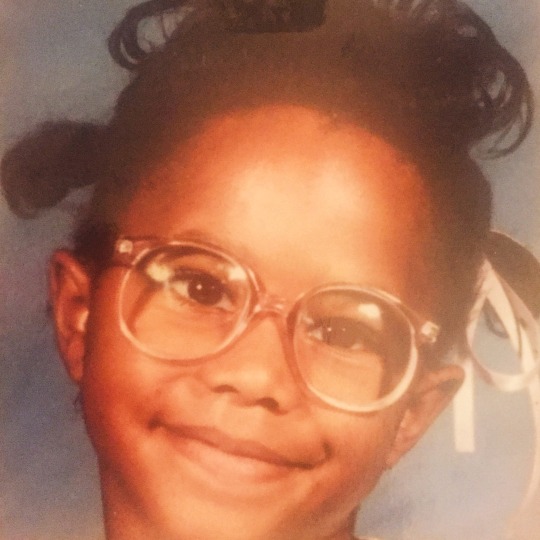
Randi Pink grew up in the South and attended a mostly white high school. She lives with her husband and their two rescue dogs in Birmingham, Alabama, where she works for a branch of National Public Radio. Into White is her fiction debut.
-
CBC Diversity Presents: “Religion in the Workplace”
Mark Fowler, deputy CEO for Tanenbaum, served as moderator for the discussion. The panelists included Preeti Chhibber, senior editorial manager at Scholastic Reading Clubs; Ellice M. Lee, incoming associate art director …
-
Happy Anniversary, ‘American Born Chinese’!
American Born Chinese received popular and critical acclaim as the first graphic novel to be a finalist for a National Book Award and the first to win the American Library Association’s Printz …
-
National Ambassador Gene Luen Yang’s NYT Comic
Yang recalls a moment in third grade when storytelling enabled him to overcome his prejudice toward a fellow classmate. I’m a writer, and belief in the power of story is almost …
-
We Breathe as One: The Role of Folktales in Diversity
Contributed by Pleasant DeSpain, Author
Fundamentally, diversity means difference. Fundamentally, folktales invite inclusion.
Sitting on a litter-strewn beach in Negombo, Sri Lanka during the fall of 2000, a 17-year old Sinhalese lad named Nehan approached me and asked if he could practice speaking English. He told me about his life and his family, the difficulties of the ongoing war with the Tamil, and how he hoped to succeed in life. Nehan also asked many questions about my life and my travels. We shared a wealth of words. An hour later I stood up and put on my shirt. At that point, the young man surprised me with a pantomime: removing his eyes and placing them in my shirt pocket. Then he said, “Take my eyes with you and show me the rest of the world.”
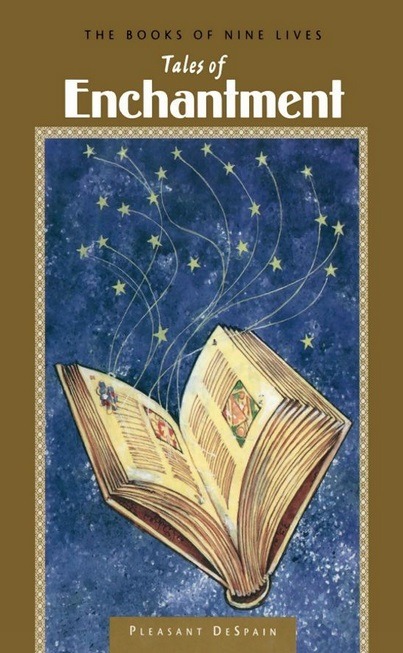
Nehan echoed an archetypal theme found in many multicultural tales. Every culture has stories dealing with the necessity of loss in order to gain something of value. In this case, the loss of sight in order to “see.”
We accept that human beings, being human are much more alike than different. The diversity of our cultures including race, ethnicity, religion, socio-economic status, age, sexuality and political beliefs is extraordinary.
Folktales (people-stories) celebrate our differences while underscoring and reinforcing our similarities. One major reason is the oral tradition. When a story is told aloud, it is shaped by the people involved. History, culture and core values are shaped each time a story is shared. Humans are travelers and they carry their stories with them. They settle in new lands with different languages and different cultural traditions. New families and friends embrace a tale as it reflects their personal understanding of how life works, continues and evolves.
Folktales originated at the beginning of human time. They’ve traveled far and wide, and continue to demonstrate our shared humanity here and now. All stories have a beginning, middle and an end. Time exists in the past, present and future. We locate stories at a point in time, followed by a recognizable place. Place exists in culture, ours or in some other region. Knowing the time, our readers and listeners can visualize the place and the people who inhabit it. And while imagining the diversity offered, the audience can “see” themselves in the story as it unfolds. Experiencing oneself amidst this diversity allows our prejudices to diminish, becoming less powerful, at least for the moment of time in the telling-listening.
As we breathe, so do we live. One of the most powerful lessons I’ve learned during all these years of discovering, telling, adapting and writing variations of age-old tales is the role of breath in bringing the story, the teller and the listener together. Stories are shared through words. Words are formed and shared with breath. When my listeners and I share the same breath, inhaling and exhaling simultaneously as the story unfolds, human bonding occurs. We feel not only more alive with imagination, emotion and expectation (and then what happens?) but more together in our shared humanity. Here, diversity lives in a profoundly positive way.
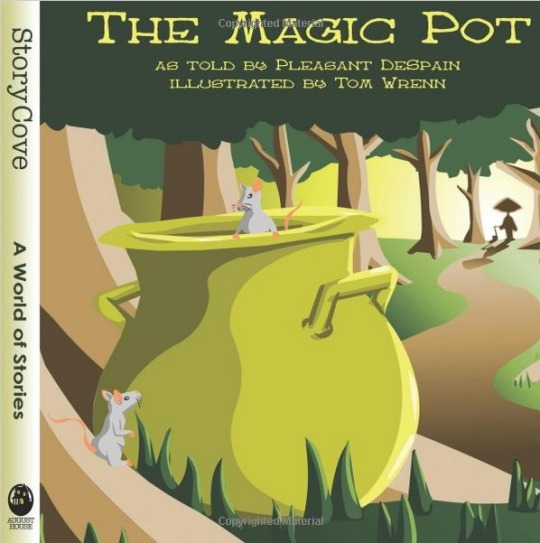
I’m a wanderer, a vagabond at heart. Having traveled far and wide on planet Earth, I’ve met many of my sisters and brothers. They are of Eastern or Western origins. Some are happy, while others are sad. They’re old and young, strong and weak. Each person has a story worth sharing. They too heard a variety of folktales when they were young. They too found themselves entertained, intrigued and educated by these timeless stories. They too found me in their stories, just as I’ve discovered them. We’ve breathed the same air. We’ve found the balance between the inhale and the exhale. Thus we celebrate our diversity together.
Nehan asked me to show him the world. How can I disappoint?
I found a folktale in Venezuela called “Tossing Eyes…”

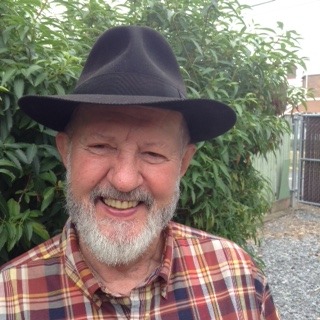
Pleasant DeSpain has a most unusual but true name and an equally unusual but true profession – writer and storyteller. He travels the world collecting, researching, writing and retelling traditional tales from native cultures. Born in Colorado, he wrote his first original story at age eight. It was published as “The Mystery Artist” in 1996. Pleasant taught speech-literature-drama for six years at three universities, and wrote-produced-hosted an award-winning TV show called “Pleasant Journeys” on KING TV, Seattle. Now, the author of eighteen award-winning, multicultural story collections and picture books, published by August House, has a home in Troy, NY and frequently travels to spend extended periods of time in Thailand. Pleasant continues to travel the world having amazing adventures. While living half of each year in Thailand, Pleasant continues to collect more stories and is currently working on a new book.
-
Diversity in the News: August 2016
The newsletter is a valuable resource for librarians, teachers, booksellers, parents and caregivers, publishing professionals, and children’s literature lovers. Find thought-provoking articles, diverse new releases, and more in this month’s issue and sign …
-
National Ambassador Gene Luen Yang Shares Ten Kids’ Comics That You Need to Read
With a wide cast of characters, including hyper-intelligent insects and a kid superhero, there’s something for every kind of reader on this book list! Paths and Portals, book two in Yang’s Secret …
-
Where’s Your Power?
Contributed by Sharon Mentyka, Writer
I belong to the most privileged group in our culture: white, heterosexual, and able-bodied. And although my female gender brings me down a notch or two, my race membership alone gives me a winning lottery ticket in life.
So when I began to write books for children in earnest, one piece of advice from an instructor in my MFA program seemed to suit me. “People will tell you to only write about what you know,” she said. “Don’t listen to them. Instead, write about the things you want to learn.” There was so much I wanted to learn. And the stories I yearned to write begged for research, listening, and learning.
Then I made a mistake. One that would have perpetuated a racist stereotype had I not been saved by a sensitivity reader.
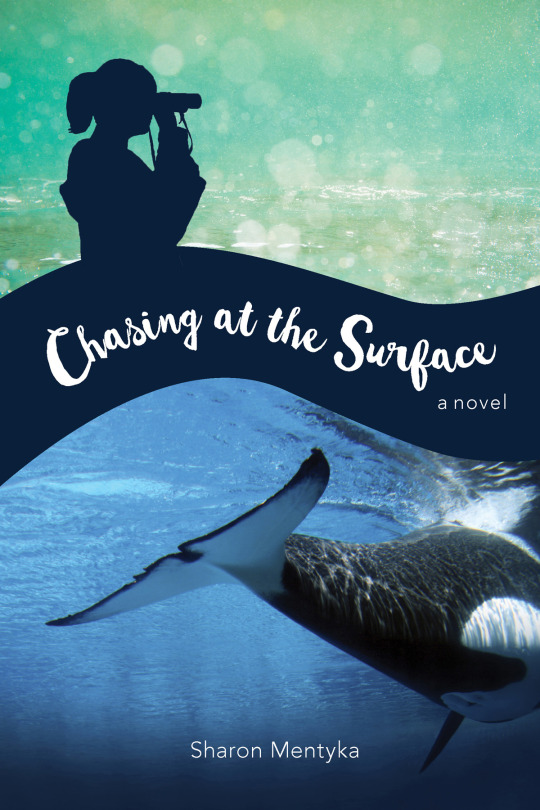
My forthcoming middle-grade novel, “Chasing at the Surface,” set in the Pacific Northwest, tells the story of a 12-year old girl whose mother mysteriously leaves home just as a pod of orca whales become trapped in an enclosed inlet. The setting for the book borders the ancestral lands of the Suquamish Tribe, who have lived in Central Puget Sound, across from present-day Seattle, for approximately 10,000 years. Like many Coast Salish people, orca whales are central to their stories, art and culture. Early on, I made numerous contacts with tribal members, checking facts, word translations, traditions and references—the hard facts that I hoped to include in my book.
Yet my characterization of one young Suquamish veered dangerously into stereotype when I singled him out as the only one struggling with domestic issues, self-esteem and alienation from his own culture, and turning to white culture to be “saved.” In fact, as I later learned, the Suquamish put the majority of their resources towards caring for their children and elders. They are the Tribe’s top priority and the situation I had blindly presented in my initial draft would never have been allowed to happen.
The experience froze my liberal white heart. How was it possible that, despite best intentions, I made a blunder that would have ended up hurting the very readers I had set out to serve?
The answer is easy; Best intentions mean nothing.
Intentions are conscious. My biases were unconscious, born out of my frame of reference as a white person of privilege. Because really, we’re not aware of walking until we put on a pair of too-tight shoes. I had become so accustomed to the inherent ”truth” of these deep-rooted stereotypes, activated and reinforced by social mores and media, that I completely failed to notice what was glaringly apparent and offensive to a member of a marginalized community and to me once it was pointed out to my conscious mind.
But failure to notice privilege does not diminish its effects.
Let me be clear here. Many who embody the definition of privilege do not yet acknowledge the power of their position, either through inattention, fatigue, or disbelief. We know that publishing is overwhelmingly white, with an industry-wide average of 79%. Yet we are all still making unimaginable mistakes.
Because of inherent biases, editors either don’t notice or overlook language in titles or illustrations that reference myths and metaphors that hold strong negative meanings to marginalized communities. Books that give a false representation of the brutal history of slavery continue to be published to starred reviews. Stories with protagonists of color still emerge with their covers whitewashed. Without a concerted effort to take notice, to train our conscious awareness of how our inherent biases affect our understanding, actions, and decisions, we will always operate out of this position of privilege to the detriment of those with less power.
So what is the way forward when the problem seems to exist at every step of the way, from manuscript idea, to writer, to agent, to editor, to publisher, illustrator, promoter, reviewer, and librarian? You’re trying to do the right thing, but it seems as if no matter what you do, it’s always wrong. It feels so unfair.
Good. This is how it should be.
For too long, those of us in positions of privilege have been far too comfortable. If there is any chance of affecting real change, shifting the paradigm, we need to be okay with feeling uncomfortable, okay with having every action we take watched and evaluated. We all know there are more books about animals than there are about children of color. If diversity is going to be more than just an industry buzzword, each of us needs to find our own power to give to the cause. Each of us who occupies a position of privilege needs to make our own decisions on where we stand, how uncomfortable we are willing to be, how we will make sure that the stories we tell are told sensitively and from a place of truth.
So where is your power? Are you a reviewer who can look beyond author and publisher marketing and evaluate books for explicit and implicit racism? Are you a librarian who can push your supervisors to shelf books by or about people of color in the “Fiction” section rather than “Multicultural Fiction?” Are you a marketing exec who can help counter the mistaken notion that the only audience out there worth marketing to is a white audience?
And writers? Seeing the world through someone else’s eyes is a challenge. But isn’t that what writers do, as we examine our own racial experiences as both a mirror to ourselves and a window to the world around us? Yes, it’s a fine balance. But it’s not a good enough reason for not making the attempt, which only perpetuates what the writer and journalist Nisi Shawl calls, “the greater failure of exclusion.”


Sharon Mentyka is a writer and teacher in Seattle with an MFA from the Whidbey Writers Workshop. Her stories and essays for both children and adults have appeared in numerous literary magazines. B in the World, an illustrated children’s chapter book about a gender non-conforming child was published in 2014. Chasing at the Surface, her debut novel for middle grade readers, inspired by an actual visit of orca whales to an enclosed inlet in the Pacific Northwest, will be published by WestWinds Press in October. SharonMentyka.com
-
The Reading Without Walls Podcast: National Ambassador Gene Luen Yang at Comic-Con 2016
Through his platform, “Reading Without Walls,” Yang hopes to inspire readers of all ages to pick up a book outside their comfort zone. In episode five of his podcast, Yang …
-
National Ambassador Gene Luen Yang at San Diego Comic-Con 2016
Yang appeared on panels with fellow comic book creators Emily Carroll (Through the Woods), John Patrick Green (Hippoptamister), Noelle Stevenson (Nimona), and more throughout the event. Check out more photos from the convention …
-
Christian Robinson to Illustrate 2017 Children’s Book Week Poster
New York, NY — August 11, 2016 — Acclaimed illustrator Christian Robinson has agreed to design the 2017 Children’s Book Week poster distributed by Every Child a Reader and the Children’s Book …
-
Fighting Homogenization
Contributed by Ned Rust, Author
They want me to try to write for what?
They want a graduate of the 99%, non-minority, public schools of last-century Briarcliff Manor (the B.M. we call it, much like residents of the O.C., only without a validating TV show) to write for a diversity blog?
Roaring Brook has just published a book I’ve written called Patrick Griffin’s Last Breakfast on Earth,about a kid who undertakes a kitchen-sink chemistry experiment and ends up in a parallel world dominated by a hyper-modern efficiency state that finds human cultural heritages to be inconvenient and even anathema.

The novel’s chapters variously feature actual (not title) griffins, vigilante mothers, misanthropic shut-ins, jackalopes, and more. The good guys are trying to combat the efficiency state baddies by championing literature and art and music and wisdom; they’re called Commonplacers because at the center of their cause is something known as The Book of the Commonplace. Commonplace books are real and wonderful things, but this one is a bit more inclusive than your average.
Getting back to this diversity blog mission, my surprise at this invitation was also stoked by the fact that the title character—though I don’t think I spent much ink on it—is a white boy of suburban extraction just like me.
I mean, why would anybody want the white male author of a white male character to contribute to a conversation about the cultural and phenotypic differences among us?
Well, I’m over my initial surprise now. And I’m grateful.
Because, in fact, it was in fact my absolute intention in writing Patrick Griffin’s Last Breakfast on Earth not just to address diversity but to make it a central cause.
I am no great fan of intolerant politicians, golf- or yacht-clubs, but I have a lot of experience living near them and it happened to be—from accident of birth and upbringing—a setting I could bring to life with better justice than some others.
So, yeah, I wrote what I knew.
In fact, I leaned into my experience with the privileged classes. As a product of an accentless suburb, and as a frequent inhabitant of media industry cubicles in my adult life, I feel I am keenly aware of the sort of variety-averse, fearful conservatism that goes hand-in-hand with society’s stratified status quo.
And I think it’s freaking evil. So evil, in fact, that I could conceive none more profound to portray in my book.
I like to think the villains of Patrick Griffin’s Last Breakfast on Earth are not the regular work-a-day malefactors of today’s popular fiction. They do not hold gladiatorial contests for their target readership’s age bracket. They do not suck blood. They do not rip bodices. They are neither contemporary schoolyard bullies nor bullying gods from some ancient polytheistic religion. They do not try to find and kill teens with special powers. They do not throw up cruel obstacles for children with cancer. They are not abusive school administrators. What they are is a group of people who are all about making the world as easy as it can be for themselves. They rule the world with a micromanaging, manipulative, efficiency-minded, monopoly-gloved, close-minded, diversity-crushing fist.
They rule the world in the way that big companies here in the real world too often do—by gate-keeping outside ideas and by investing in what they perceive to be safe bets. They assume that we, the faceless (though demographically assessed) consumer hordes, like less diversity rather than more diversity. And, by catering to this assumption, they believe they will extract more money and social power from us.
It probably is not the most commercially savvy note to sound. It is doubtless easier to say one’s main character is up against an Evil Wizard than up against the Homogenizing Forces of Modern Corporate Culture. But I maintain some hope that Patrick Griffin’s Last Breakfast on Earth will get some readers to think critically about and even to take action against the monoculture-loving, diversity-fearing, sunlight-avoiding, culturally abhorrent forces all around us. Anyhow, I really can’t think of an evil more profound. And if I didn’t write a compelling story that makes this message stick with my readers . . . well, that failure deserves to stick to it, and to me, like white on snow.


Photo credit Bart Rust
Ned Rust is the co-author of two books in the Daniel X series and Witch and Wizard: The Gift with James Patterson. He lives in Croton, New York, with his wife, son, and daughter.
-
National Ambassador Gene Luen Yang’s Creativity in Progress Series: Part 5
In his latest post, Yang shares his approach to inking. Though it took him years of practice to hone — and a few spills — inking is now Yang’s favorite part of …
-
Bookish Reminders Here and Abroad
Last month I joined seven other children’s book editors on a week-long trip across Germany, sponsored by the German Book Office of New York. The program nurtures Germany’s relationships with publishers around the globe, as Deutschland imports roughly 50% of its children’s books from other countries.
Everyone involved learned a ridiculous amount about what we all do similarly and differently, and I was constantly inspired to think more globally and critically about my own lists.
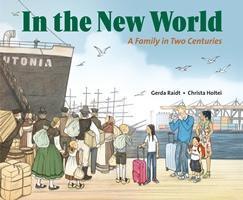
I was also constantly reminded of children’s books I’ve connected with, including many from Charlesbridge. At a pop-up illustrator gallery in Hamburg, for example, I recognized the art of Gerda Raidt, illustrator of In the New World: A Family in Two Centuries. Charlesbridge translated this from German and published it last year. At a visit to a smaller publisher, I held the German edition of Blood & Ink, a contemporary young-adult novel Charlesbridge will release in English, in 2017. Other destinations during my travels brought to mind children’s titles from a wide-range of publishers, with topics ranging from WWII, Shakespeare, Japanese samurais, and the Brothers Grimm.
I share this because I don’t get out of my bubble nearly enough. It was empowering and exciting to experience different cultures and see parts of the world I’d only known through literature. Likewise, it was heartening to remember that even if readers aren’t always fortunate enough to see the world, we can still “see” the world through books.
This theme emerged most powerfully at the Tempelhof Airport in Berlin. I was reminded of Charlesbridge’s The Candy Bomber: The Story of the Berlin Airlift’s “Chocolate Pilot,” which recounts how Gail Halverson brought joy and hope to the children of devastated Berlin.

Although the airport is now defunct, it has modern relevance. Its runways now serve bikers, joggers, and picnickers rather than aircraft. And behind the fence surrounding the airport’s main building, refugees live in tented shelters. German Chancellor Angela Merkel approved converting the airport into a makeshift shelter for thousands of refugees and migrants from Syria, Afghanistan, and other countries.
Looking through the fence, I started to think about how the refugee issue will look to us years from now. Down the road, how will future books depict our global response to today’s crisis? Or to the refugees that were forced to leave so many countries over so many years? Will we feel pride or shame? And what books can we find now, to guide us through this history-in-the-making? Is there still hope for a happy ending?
I don’t have the answers, but I do know that I personally want to expand my own knowledge and empathy on the matter. Here is a list of children’s books I’ve been reading and rereading now that I’m home from Germany. Should I visit this part of the world again in the future, I hope some of these titles will come to mind. I hope they will remind me of brave souls and of communities that chose compassion and education over fear and hate.
Books that can inspire conversation about immigrants and refugees:
- Four Feet, Two Sandals by Karen Lynn Williams and Khadra Mohammed, illustrated by Doug Chayka
- In the New
World: A Family in Two Centuries by Christa Holtei,
illustrated by Gerda Raidt
- A Long
Pitch Home by Natalie Dias Lorenzi
- Mama’s
Nightingale: A Story of Immigration and Separation by Edwidge Danticat,
illustrated by Leslie Staub
- My Shoes
and I by Rene’ by Rene Colato Lainez,
illustrated by Fabricio Vanden Broeck
- Marianthe’s Story: Painted Words and Spoken Memories by
Aliki
- Pancho
Rabbit and the Coyote: A Migrant’s Tale by Duncan Tonatiuh
- A Path of Stars by Anne Sibley O’Brien
- Sitti’s Secrets by Naomi Shihab
Nye, illustrated by Nancy Carpenter
- The Arrival by Shaun Tan

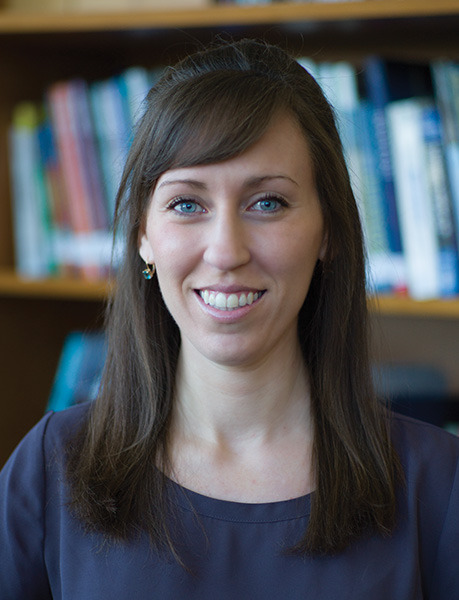
Julie Bliven is an editor at Charlesbridge. She holds an M.A. in Children’s Literature from Simmons College. The I’m Your Neighbor project and CBC Diversity continue to help her find titles that bring diverse experiences to our book market. Julie is especially grateful to author and librarian Natalie Dias Lorenzi for recommending some of the titles on this particular list of recommended books.
-
National Ambassador Gene Luen Yang on Reading and Writing Outside One’s Comfort Zone
Through his platform, “Reading Without Walls,” Yang encourages readers to pick up books outside their comfort zone — featuring characters different from themselves. As a writer, he also pushes himself …
-
National Ambassador Gene Luen Yang on Diversity and Comics
Through his platform Reading Without Walls, Yang hopes to inspire readers of all ages to expand their reading tastes and discover diversity in both format and content. Check out these …
-
A Different Lens: Part 2
Contributed by Mary Birdsell, Photographer
Last month I wrote an article for this site, discussing my experience photographing children with special needs and my upcoming trip to photograph children in Tanzania. International travel, two words that appear exciting, exotic, and luxurious, are in reality about spending hours wedged between strangers. It is neither exciting, exotic, nor even the slightest bit luxurious. After landing in a different hemisphere, the excitement starts to build again. I’m not sure what I expected to see in Tanzania, but I was surprised to see fields of corn. As a Midwesterner, I’m well versed in fields of corn and found it very welcoming. What made it exotic was seeing palm trees growing next to the corn. Fields, mountains, plains, rainforests, and beaches met to make picture perfect views.
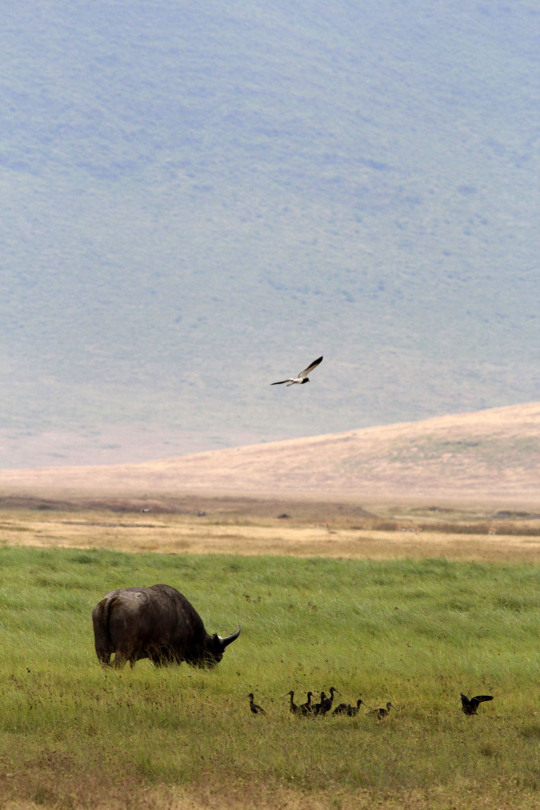
When I started taking pictures, I found it hard to stop. As a photographer, the digital age has made taking large quantities of pictures so much more accessible. Armed with a dozen memory cards and several cameras with a variety of lenses, I took thousands of pictures. So many that after being back on American soil for a month, I still haven’t gone through them all. Some of the pictures will be more quantity and less quality. But how could I stop myself when I knew I may never be on another safari? I could spend hours telling you about the majesty of lions or the colors of the different birds, but even more eye opening were the people I photographed.
The people of Tanzania are welcoming and kind. The buildings are kept meticulously clean. It didn’t matter if the walkways were dirt paths, they were swept and cared for daily. I began to realize how much of our country is covered in pavement. I also began to see how having something that is meager, does not mean it is worthless.
People have value. Inclusion has shown Americans the value of people no matter their ability. In Tanzania they are in the process of acknowledging the value of all of their citizens. In the past, children and adults that had disabilities were kept hidden away in their homes. And while that may still be the case at times, strides are being made to see the worth of all people. Inclusion may be in its infancy in Tanzania, but the teachers there are dedicated to seeing it become the norm.
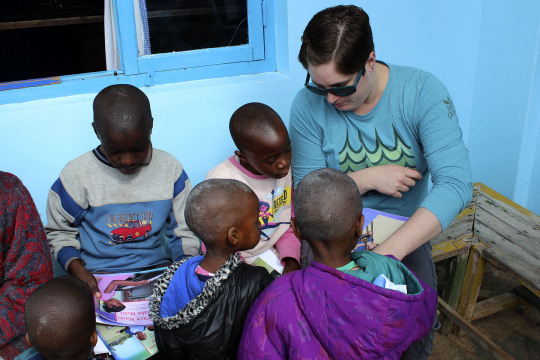
As a former teacher, I’ve spent many hours training and doing continuing education. I know what a room full of teachers can be like. My experience with Tanzanian teachers taught me that being an educator is something that translates into any language. Committed, passionate, and intelligent teachers are everywhere. Some are teaching in classrooms with 80 students and not enough desks, let alone materials, but they are still advocating for their students.
Just as teachers are teachers no matter their geography, kids are kids no matter their language. I didn’t need to be fluent in Swahili to sense that the bragging adolescent boys were trying hard to be grown up and the young girls sitting quietly were shy. The children were excited to read books and happy to make faces for pictures. Like their American counterparts, they could use a cell phone better than I can and knew the word, “selfie.”
Looking through the lens of my camera took me to the other side of the world to see remarkable people, animals, and landscapes. I saw more than I could process in the three weeks I spent traveling. It made me very grateful that I had the opportunity not only to see these people and places, but to tell their stories.

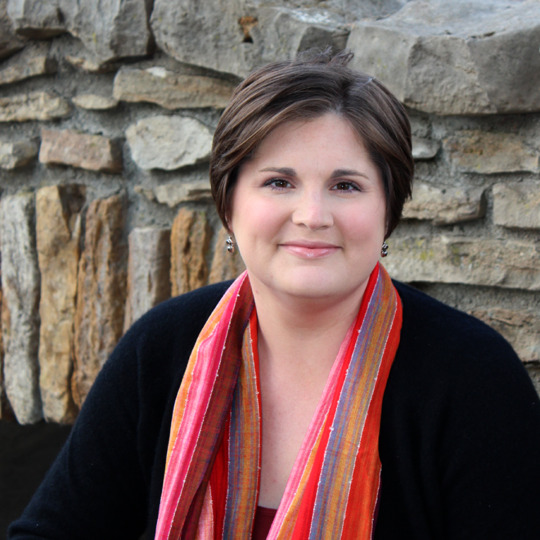
Mary Birdsell is a freelance photographer and a former Speech and Theatre teacher. She strives to create images that reflect the strengths of each child. This fall, Finding My Way Books will publish two picture books, sharing stories of children with disabilities, and four concept books. All six books will feature photographs Mary took on her trip to Tanzania.
-
2016 Children’s Choice Book Awards Winners Donate Books to Classrooms
This year’s eight winning authors and illustrators have generously provided books to the following classrooms: R.L. Stine, The Little Shop of Monsters (Kindergarten to Second Grade Book of the Year): …
-
Diversity in the News: July 2016
The newsletter is a valuable resource for librarians, teachers, booksellers, parents and caregivers, publishing professionals, and children’s literature lovers. Find thought-provoking articles, diverse new releases, and more in this month’s issue and sign …



















